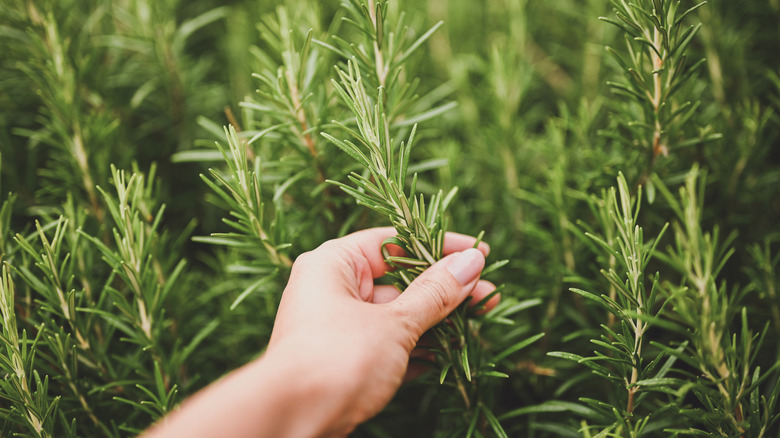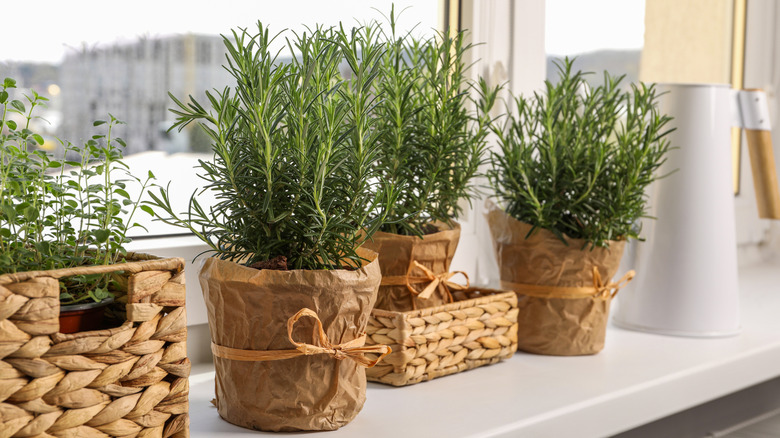Should You Fertilize Rosemary In Fall & Winter? Here's The Secret To Thriving Plants
Whether you've created an herb garden on your patio, in your kitchen, or in the backyard, chances are it includes Salvia rosmarinus, otherwise known as rosemary. This aromatic Mediterranean evergreen has a wide variety of uses, from cooking to medicine, not to mention it looks great with its needle-like leaves and small blue or white flowers. However, for thriving plants, knowing when to fertilize is best: do so in the spring, and avoid doing so in the winter.
Rosemary is a perennial that can live for decades in a variety of climates, ranging from USDA hardiness zones 8 through 11. It requires minimal water but plenty of sunshine (6 to 8 hours daily), both indoors and out. It does best in well-drained, light, loamy soil that's slightly acidic with a pH between 6.0 and 7.0. To help your rosemary plants thrive, make one simple addition to the soil: add gritty materials, like sand, gravel, and perlite.
Rosemary requires regular doses of plant food; however, you shouldn't be liberal with the fertilizer. Apply it in early spring, just before new growth begins to sprout. You shouldn't fertilize rosemary in the fall or winter, as its growth begins to slow, reducing the need for nutrients. Slow-release fertilizer is a good option, so you don't have to worry about a second dose. On the odd chance the plant stops growing or shows yellowing leaves, then you know you haven't fertilized enough.
How to ensure your rosemary plants thrive
In order to properly care for your rosemary herb plant, you'll need to be conscientious about feeding and watering it correctly. When it comes to feeding the plant, organic options like compost and seaweed are recommended, particularly if you plan to use the herb for cooking. While chemical fertilizers work fine, they can alter the taste and aroma of rosemary, so it's important to search for mixes with a nitrogen-phosphorus-potassium (or NPK) ratio of 10-10-10 or 12-12-12.
Careful watering is also important, as it's easy to overwater rosemary, which can quickly result in root rot. While a new plant should be kept moist during its first full year so it can set down strong roots, it's imperative to cut back on frequency afterwards. Whether you're growing the rosemary outdoors or indoors, a handy hack is to allow the top inch or two of soil to become dry to the touch (without becoming desert-like) before watering. On average, this will take about two weeks for outdoor plants and closer to one week if the rosemary is potted. However, if the soil still appears moist after that time, do not reach for the watering can, even if it means going longer than scheduled between waterings.

